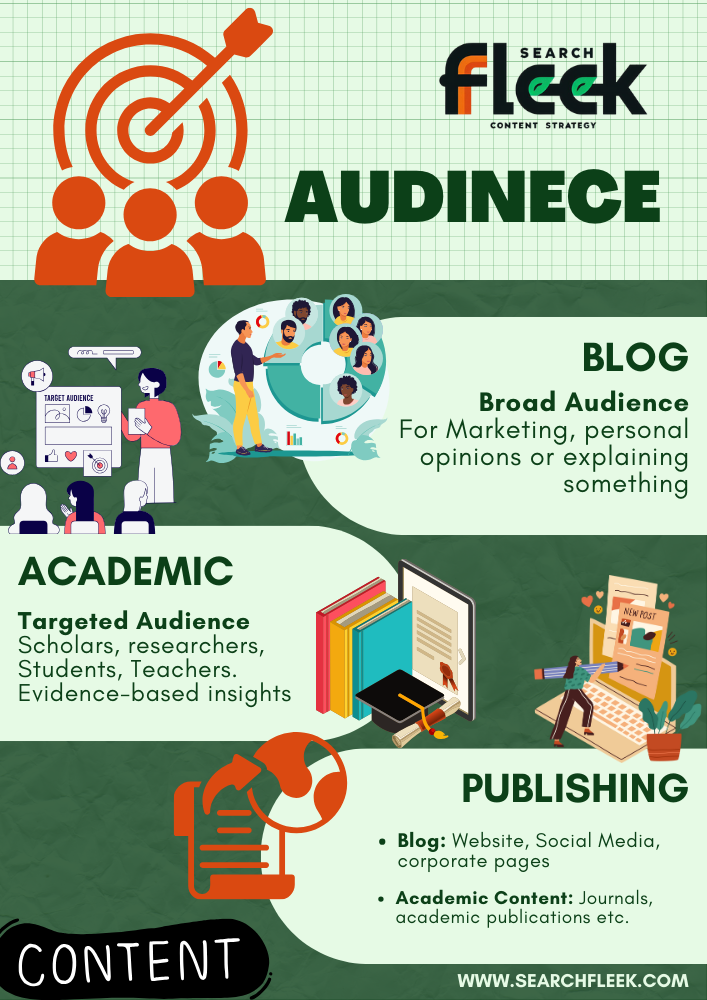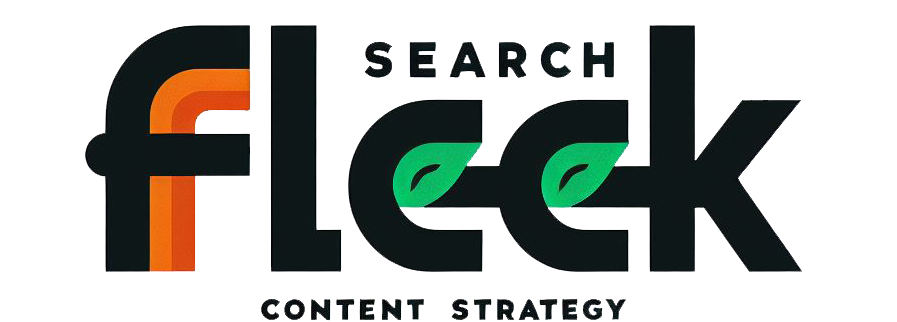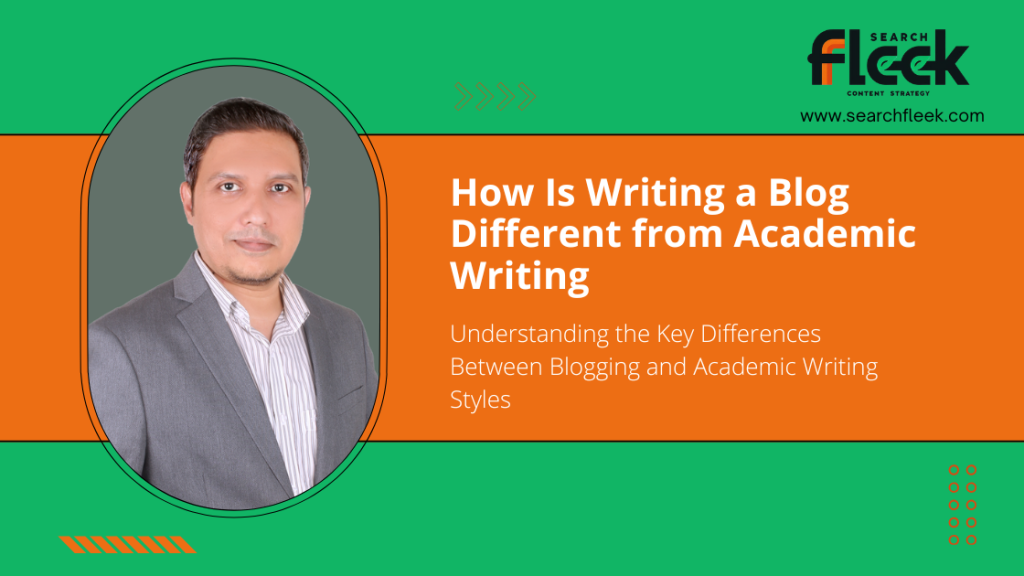Ever noticed how writing a blog feels so different from writing an academic paper? It’s not just about the words—it’s about who you’re writing for and how you’re saying it.
Blogs are conversational, designed to engage and connect with readers on a personal level. Academic writing, on the other hand, is formal, structured, and focused on presenting well-researched arguments. Both have their place, but they couldn’t be more different in tone, style, and purpose.
In this post, we’ll explore what sets blog writing apart from academic writing. By understanding these differences, you’ll be better equipped to master each format and communicate your message effectively.
Purpose and Audience
Blog Writing
Blog writing is often directed at a broad audience and aims to engage, inform, or entertain readers. Blogs are frequently used for marketing, sharing personal opinions, or explaining topics in an accessible way. They’re typically hosted on websites, corporate pages, or social media platforms and designed for easy readability.
Academic Writing
Academic writing, in contrast, is primarily targeted at scholars, researchers, and students within a specific field. Its purpose is to contribute to academic discourse, provide evidence-based insights, and advance knowledge in a structured, formal way. This type of writing is often published in journals, academic publications, or as part of educational coursework.

Tone and Style
Blog Writing Tone
Blogs generally adopt a conversational and approachable tone. Writers may use first-person or second-person language (“I” or “you”) to connect directly with the reader, making the content feel relatable. Humor, personal anecdotes, and casual language are often acceptable in blog writing.
Academic Writing Tone
Academic writing, however, requires a formal and objective tone. Writers avoid first-person language and rely on third-person perspectives to maintain a sense of impartiality. The writing is straightforward and lacks personal anecdotes or casual expressions. The emphasis is on precision, objectivity, and clarity.
Structure and Organization
Blog Writing Structure
Blog posts are usually flexible in structure and allow for creative formatting. They often include:
- Headings and Subheadings: These help organize content and improve readability.
- Bullet Points and Lists: Frequently used to summarize information and make key points easier to digest.
- Images and Graphics: Blogs often use visuals to support the content, break up text, and add visual appeal.
- Calls to Action (CTAs): Since blogs are often marketing tools, they may include CTAs to encourage reader engagement.
Example: A blog post titled “Top 5 Benefits of Mindfulness Meditation” might include bullet points, brief descriptions, and appealing visuals to capture readers’ interest.
Academic Writing Structure
Academic writing follows a strict structure, which includes sections such as:
- Introduction: Presents the research question, purpose, and overview.
- Literature Review: Summarizes existing studies related to the topic.
- Methodology: Describes research methods used.
- Results and Discussion: Presents findings and discusses their implications.
- Conclusion: Summarizes insights and suggests future research.
Example: A research paper titled “The Effects of Mindfulness Meditation on Academic Performance” would include an abstract, detailed methodology, data analysis, and references, adhering to a standardized format.
Research and Credibility
Research in Blog Writing
Blog writing does not always require extensive research. While blog writers should ensure the information they present is accurate, blog content is often based on personal experience, opinions, or general knowledge. Research, if included, is typically simplified and summarized to remain accessible.
Research in Academic Writing
Academic writing requires rigorous research and is based on verified, credible sources. Writers conduct in-depth studies, cite scholarly sources, and often engage in original research to contribute to the academic field. Every claim made must be backed by data, peer-reviewed research, or established theories.
Citations and References
Blog Writing Citations
Blog posts may reference sources but typically do not require formal citations. When sources are cited, they are often hyperlinked directly within the text, making it easy for readers to follow links to further reading.
Academic Writing Citations
In academic writing, citations are mandatory. Writers must adhere to specific citation styles, such as APA, MLA, or Chicago, and include a detailed bibliography or works cited section. Proper citation is essential to acknowledge sources, avoid plagiarism, and support the credibility of the work.
Length and Depth
Blog Writing Length
Blog posts can vary in length but are generally shorter than academic writing, often ranging from 500 to 2,000 words. The content is usually concise, focusing on delivering information in a quick, digestible way to suit online readers.
Academic Writing Length
Academic papers are typically longer, often exceeding 2,000 words and extending to tens of thousands of words in the case of theses or dissertations. Academic writing demands a thorough exploration of the topic, providing in-depth insights, analysis, and supporting data.
Examples of Each
To highlight these differences, here are examples illustrating how the same topic might be handled in a blog post versus an academic paper.
- Blog Post: “How Mindfulness Can Help Reduce Stress in Everyday Life”
- This post might include practical tips, a conversational tone, personal insights, and links to related articles or resources.
- Academic Paper: “An Empirical Study of the Effects of Mindfulness on Stress Reduction”
- This paper would present research methods, a controlled experiment, data analysis, and a review of existing studies, formatted according to academic standards.
Conclusion
Writing a blog post is fundamentally different from academic writing in its purpose, tone, style, structure, and research requirements. While blog writing aims to engage and inform in an accessible way, academic writing contributes to a specific field of knowledge with a formal, evidence-based approach. Recognizing these differences helps writers choose the right approach for their content and reach their intended audience effectively.
Emon Anam, CEO of Search Fleek, isn't your typical digital guru. He brings a unique blend of financial expertise (former banking pro!) and digital marketing mastery to the table. A self-proclaimed "SEO Sherlock Holmes," Emon unlocks content secrets for local businesses and SaaS companies. But beyond the keyboard, he's a devoted family man, music enthusiast, and cricket champion. Let Emon weave your digital success story!
AI Writing Disclaimer
This post was initially researched and outlined by me. The content was then generated by an AI language model using the provided information. The final text has been reviewed and edited by me for accuracy and clarity.




